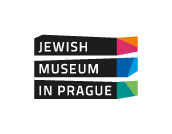In a small-town shul (synagogue) there’s a dispute about who should daven shacharit (say morning prayers) far’n omed (at the pulpit). One Jew shouts out: “I have a Yahrzeit today, so I have to daven today!” A second Jew shouts out: “Yahrzeit is Yahrzeit. But I, I have shloshim (the thirtieth day of mourning) today. I take precedence, I have to daven! A third Jew shouts out: “It’s not even 14 days since my father died, I have to daven.” And while they are arguing, another Jew goes up to the pulpit and shouts out: "I myself am a corpse, so I have to daven!”
This charming joke appeared in Židovské zprávy [Jewish News] (Volume 18, No. 38, p. 4) on 20 September 1935, as written by Josef Pollák, later the chief curator at the Central Jewish Museum in Prague. What does Yahrzeit mean? For those who speak German, this word can evoke one of the four seasons. But in Yiddish, the term Yahrzeit (or yortsayt, sometimes spelled jahrzeit) has taken on a different meaning: it refers to the anniversary of the day of death of a loved one. Important members of the community and, in particular, influential scholars are also commemorated on their Yahrzeits by unrelated persons. Their graves are visited by their former pupils, and these Yahrzeits are memorable days for the entire community.
Until the 19th century, it was not difficult to determine the date of a Yahrzeit, as it corresponded to the Hebrew date of death, or, less frequently, to the date of the funeral of the person being commemorated. A certain problem could have occurred only in the event of a postponed funeral that took place later than the second day after a death, or if the person died during a leap year in the first or second month of Adar. The religious literature provides solutions for such cases. The time of remembrance for the deceased came to be seen as a more general complication only with the changing perception of time in the Jewish world in connection with the problems brought about by the Jews’ shift towards the civil/Gregorian calendar.
The Yahrzeit date is calculated according to the Jewish calendar, which differs in many ways from the civil calendar. It represents the traditional count of years since the creation of the world as described in Genesis; the year 2021, for example, corresponds to 5781. Based on the lunar calendar, the months are either 29 or 30 days long. As a result, the Jewish year is eleven days shorter than the standard solar year. In order to keep the dates of Jewish holidays aligned with the seasons, a thirteenth month is added to the Jewish calendar in a leap year; this happens seven times in nineteen years.
The collections of the Jewish Museum in Prague contain a set of Yahrzeit plaques, which are traditionally used to memorialize the passing of a loved one. Each plaque is inscribed with the Hebrew name of the person who is to be remembered in prayer (including the names of their father and/or mother). The main purpose of the Yahrzeit plaque is to record, for several years in advance the civil calendar dates that correspond to the Hebrew date of death of the departed (usually a parent, or both parents). These dates also impact the family life of the bereaved: on the Yahrzeit of the departed, it is not appropriate to attend any celebrations or parties, to make wedding preparations, or to indulge in entertainment. Yahrzeit plaques recall that the death of a person is part of the lives of others. Despite the solemnity, the Yahrzeit ritual provides a comforting way to remember a loved one for many years to come.
Exhibition created by Lenka Uličná
Translation: Stephen Hattersley













